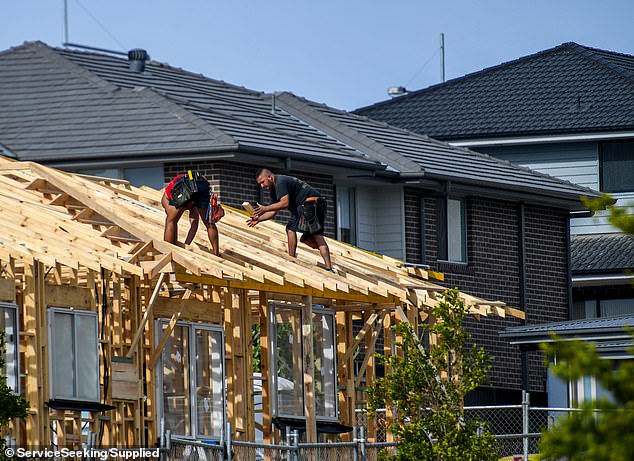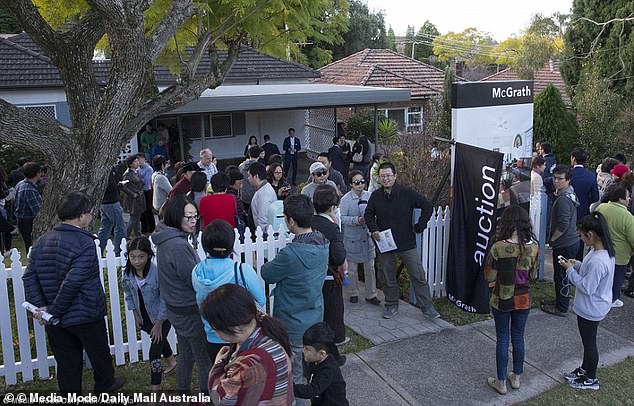The REAL reason Albo’s government is tiptoeing behind the scenes to slash negative gearing – and it’s got nothing to do with Australia’s housing crisis, writes PETER VAN ONSELEN
Negative gearing may therefore be back on the table, because Labor wants to rein in a tax advantage again.
We will soon see whether their convictions give them the courage to pursue change.
Former opposition leader Bill Shorten lost two elections when he tried to make the case for reducing negative gearing on property investments.
The second defeat, in 2019, was deemed an ‘unlosable election’ before it was definitively lost and we were forced to endure three years of Scott Morrison’s leadership before he lost the 2022 election.
Prime Minister Anthony Albanese has tried to tie himself in knots this week by rhetorically wading his way through questions about whether his government has asked the Treasury Department to come up with different ways to cut tax breaks.
The word salad that Albo delivered ultimately suggested not.
Unsurprisingly, voters and commentators alike are unconvinced by his denials, but believe that curbing negative gearing could once again be a viable political option.
That’s because Albo lied to us before when he denied that policy changes were coming.
Prime Minister Anthony Albanese is considering major changes to negative gearing
He did this when asked about plans to change the statutory income tax cuts in phase three, just before he changed them.
Labor did the same when it changed the super rules and imposed IR changes that were not implemented at the last election.
Regardless of whether or not Albo ultimately decides to push negative reforms into the next election, we need to bring out the true motivation for even considering this.
It has nothing to do with making housing more affordable or accessible.
The motivation to reduce negative gearing is all about increasing government tax revenue while limiting what is seen as a tax break for the wealthy.
The idea that changes to negative gearing can help solve the ‘housing crisis’ is almost too absurd for words, but I’ll explain why anyway.
Not only does it do nothing to increase supply – which is the real problem when not enough people currently have access to the housing they need – but it also reduces negative gearing risks, making it even harder to access to affordable housing.
That’s because investment properties that are currently rented out offer homes to people who often can’t afford to buy. So they rent instead.
If you remove negative gearing, purchase prices may indeed drop slightly, although that is far from guaranteed. But not enough for many renters to decide to buy instead.
However, if reduced negative gearing takes investors out of the housing market and into other, more fiscally effective investments, renters are left with fewer options.

At the heart of Australia’s housing crisis is a lack of supply and new construction of homes
Especially if this reduces the number of properties built, which it probably would.
Plenty of developers are spouting off what they sell to investors who buy to take advantage of the tax breaks.
If that market dries up, that could happen too.
So we really need to highlight the government’s main motivation here: reducing negative gearing as a way to raise taxes and ideologically suppress wealthy investors.
It’s just that many people with negative real estate investment equipment aren’t that rich to begin with.
For example, a certain writer for a left-wing publication who always bangs on about housing issues, but never reveals that she has an investment property that is currently negatively biased.
This is probably a good time for me to announce that I don’t have any properties that are negatively aligned. I invest in asset classes other than the family home.
But the point here is that it is a misnomer that only the wealthy have a negative impact on real estate investments.
Some do, but most invest their money in countless other ways. Many who negatively align traits are ambitious and not wealthy.

The average house price in Australia’s capital cities combined was a staggering $997,352 in September 2024
I have no philosophical opposition to reforming the negative gearing rules, and I think the ability to own large numbers of properties (rather than just one or two) to reduce tax liability should be changed.
But it must be included in a broader tax reform package to improve the entire scope of how we tax and spend.
Otherwise, Labor would just use the change to falsify the real purpose behind it.
By giving the impression that the country is tackling the housing crisis, while it is only lining the pockets of the Treasury in an attempt to suppress aspirations.
If Labor really cared about increasing housing supply, it would do what it promised but has so far failed to do, and reduce skyrocketing levels of immigration.
It would also engage with state governments to release more housing supply, i.e. land, and find ways to reduce the cost and time-consuming nature of the red tape associated with new construction projects.
And consideration could be given to limiting the negative impact on longer-term rentals rather than short-term accommodation.
This would ensure that such investment properties are used to assist with residential housing rather than just for holiday accommodation.
